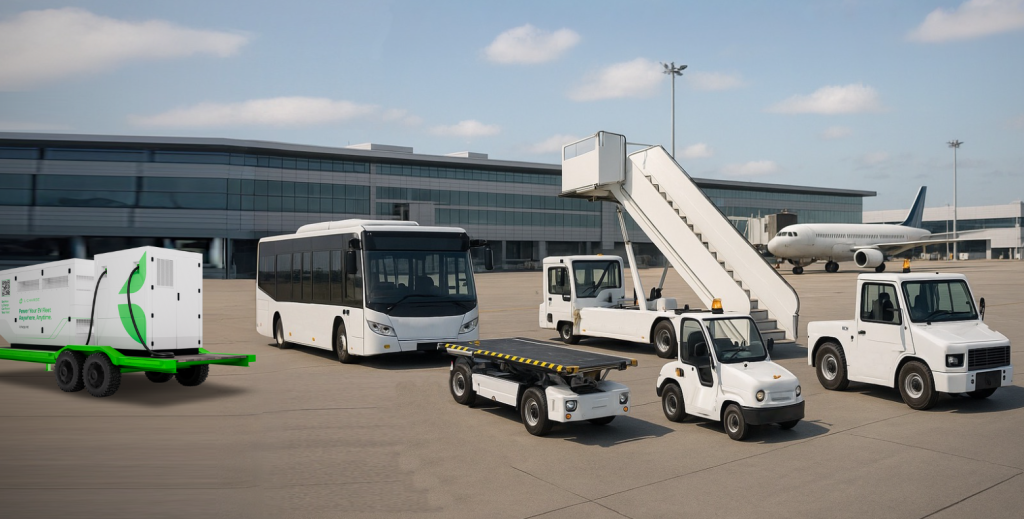How to Electrify Airside Fleets Overnight?



L-Charge’s off-grid, mobile charging solution provides airports with a faster, cheaper, and more flexible way to power electric airside fleets without waiting for grid upgrades.
The U.S. plans to electrify 50% of all airport GSE by 2030, requiring thousands of new charging stations
Major hubs like LAX and SFO have already begun electrifying fleets, but smaller airports struggle with high costs and outdated power grids
Electric GSE adoption is growing at 18% annually, but charging infrastructure remains a bottleneck (BloombergNEF, 2024)
L-Charge’s mobile, off-grid power stations eliminate dependency on fixed grid infrastructure, providing a scalable, cost-efficient, and ultra-fast charging solution.
Generates power on-site using Renewable Natural Gas and other clean fuels.
Ideal for airports with aging infrastructure or those in remote locations.
Level 3 ultra-fast charging, reducing downtime.
Enables opportunity charging between shifts, keeping operations running smoothly.
Avoids expensive grid upgrades—saving airports millions in capital expenses.
Pay-as-you-go model allows gradual fleet electrification.
Uses low-carbon or carbon-negative fuels(flare gas), supporting FAA and EPA sustainability mandates.
Hydrogen-ready and compatible with next-gen battery-electric GSE.
Baggage & Cargo Tugs – Fast-charge electric tugs without disrupting logistics.
Aircraft Pushback Tractors – High-power charging for heavy-duty EVs.
Passenger Shuttles – Keep electric buses running with minimal downtime.
Emergency Backup Power – Provides resilient power during outages.
With U.S. airports facing decarbonization targets, electrifying airside fleets can’t wait for slow grid upgrades. L-Charge’s off-grid, mobile charging stations offer a fast, cost-effective, and scalable solution, helping airports meet sustainability goals without operational disruptions.
Ready to future-proof your airside operations? Contact L-Charge today for a custom electrification plan.